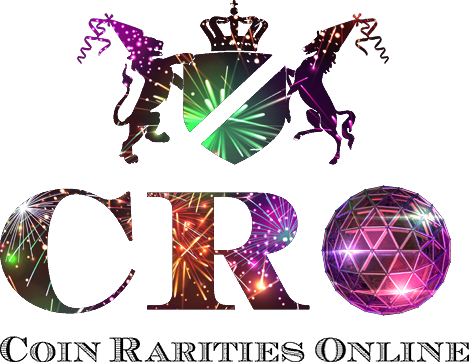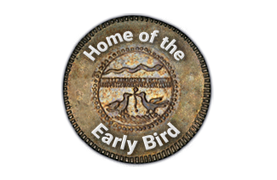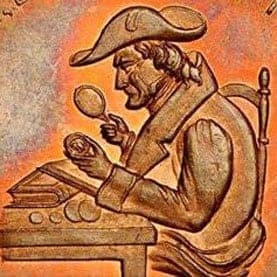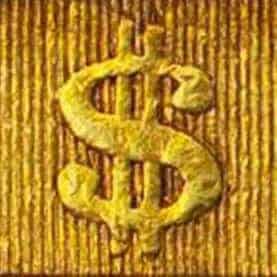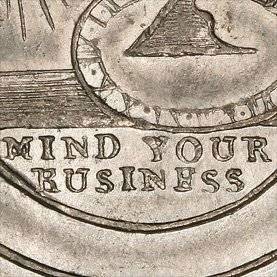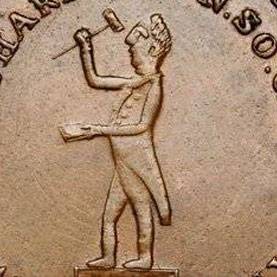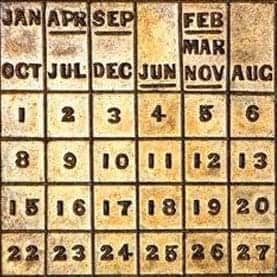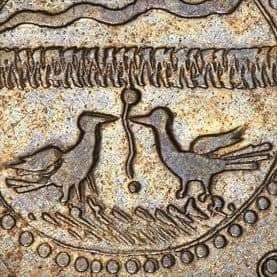January 25-27, 2010: Stack’s Americana Auction in New York, Part II
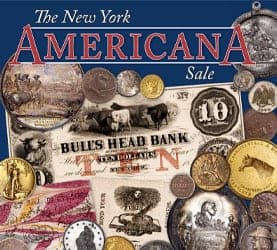
While John did his lot viewing at Stack’s on Friday last week, I, David J. Wnuck, headed out this Monday for the car + train trip into Manhattan.
And though I knew the way to the commuter train station by heart, I figured this would be an excellent opportunity to try out the new Garmin GPS that I received for Christmas. The first step of which was to select the ‘young Australian woman’ voice from the instruction menu, which I would highly recommend to anyone who thinks they might enjoy being gently bossed around by Nicole Kidman.
Though tempted, I did not bring Nicole, er, the Garmin, with me on the train to Grand Central, which was probably for the best, since I would be very busy reading the copious notes John had sent me on the auction lots he liked, and then transcribing them into my thick Americana catalog in tiny writing which I myself would struggle to read later.
Anyway, I arrived at Stack’s to a surprisingly empty viewing room, apparently the result of lots of flight delays into NY by some especially crummy weather. But the room would eventually fill up with nearly all of the usual suspects, some of whom tend to speak in booming voices, allowing most anyone who happens to be in the room (or in an adjacent room, or possibly in the building next door) to hear all sorts of interesting things about coins and the coin business, who bought what, who stiffed who, how the services are grading these days (critical information for the crack-out guys), and which coins they love and are planning to bid on (unless it’s just a ruse, and they are actually the consignor?). Hmmm, best to tune all that stuff out, which is what I did, instead focusing squarely on the task at hand: Figuring out which coins I thought we should try to buy, and how much we were willing to pay. Then discussing my thoughts with John by phone and email, narrowing the field, figuring our final numbers and bidding.
But this time we wouldn’t be sitting in the auction room with our paddle in the air. Which means we didn’t get to see a lot of our collector and dealer friends, or take part in the excellent schmoozing that usually goes on at these events. Which was too bad, as we always enjoy that, but this week has been too chock-full of other exciting numismatic activities (some of which will be revealed shortly), and so we had no choice but to bid via the computer.
Which also means that we, unfortunately, don’t have any exciting auction room stories to tell, and will have to satisfy ourselves with a look at what a few selected items sold for and what we thought of them:
The (and I quote) “Q. David Bowers Reference Collection of Liberty Nickels” was sold in a long list of individual lots, and was very nice overall, but brought prices that were cheap to average in my view. We thought they might sell for strong premiums based on the quality, and the interesting provenance, but apparently not.
Lot #3178, a very attractive, crusty 1796 Quarter in an NGC VF25 holder sold for a quite reasonable (In our opinion) $29,325. That’s about as pretty an example as we’ve seen in that grade / price range.
Lot #3534, an 1860-D $5 in a PCGS MS63 holder, was a great coin with a great story. It apparently was received at the Dahlonega mint in 1860 in exchange for scrap gold, and remained in the same family until it was hammered down in this auction. It was a wonderful coin that John and I really liked, and others must have too, as it sold for a healthy $43,125.
Lot #3566, an 1800 $10 graded AU55 by PCGS , was the second ‘fresh’ gold coin I noted in my catalog. And while this piece was not technically better than 55 in my view, it was totally original and untouched, explaining its strong price of $27,600.
Lot #4109, a 1737 Higley Copper Broad Axe graded AG3 by PCGS, brought what we thought was a robust $37,345. It was well worn, and quite rough, but it had a charming look and made a respectable entry-level example(!) of this extremely popular type.
Lot #4112, a scarce and suitably crusty 1783 Chalmers 3p in XF40 [PCGS], brought a super deluxe $29,900, indicating that there must be some strong demand out there for the very few silver colonials struck in early America, even if they are smaller than a US Three Cent Silver.
Lot #4232, a 1786 New Jersey No Coulter Maris 12-G, was one of the highlights of the Clem Schettino (a C4 member and friend) consignment and the single most expensive coin at $12,650 – a testament to the popularity of nice examples of this tough Maris variety and of this Redbook type.
Lot #4245, the 1786 New Jersey 17-J pedigreed to Hans Schulman’s 1955 sale of the Jacob Spiro Collection (the Holy Grail for NJ collectors), was one of the prettiest coins in the Schettino collection and would have been equally appealing for a NJ copper specialist or a colonial type collector, but sold for what we thought was a very reasonable $2,990 to a specialist collector. Frankly, we wish we had kept bidding.
Lot #4277, the R-7- 1786 New Jersey 27-j, on the other hand, was not one of the prettiest coins in the offering, and was, in fact, just barely identifiable as to variety, but its price realized of $2,530 probably represented the only relatively affordable opportunity to acquire this issue for those working on a set of NJ coppers by Maris variety. And that is significant.
Lot #4287, a high end 1787 New Jersey 34-J, one of the best we’ve seen or know about, brought a pretty strong $8,050 to a specialist collector.
In all, we bid on quite a few things, getting the one coin we really wanted, but very few others in a session in which prices were generally high (at least on the stuff we wanted).
Our next RR will be posted in just a few days from Beverly Hills, CA, which means I really have to cut this short and go pack.
